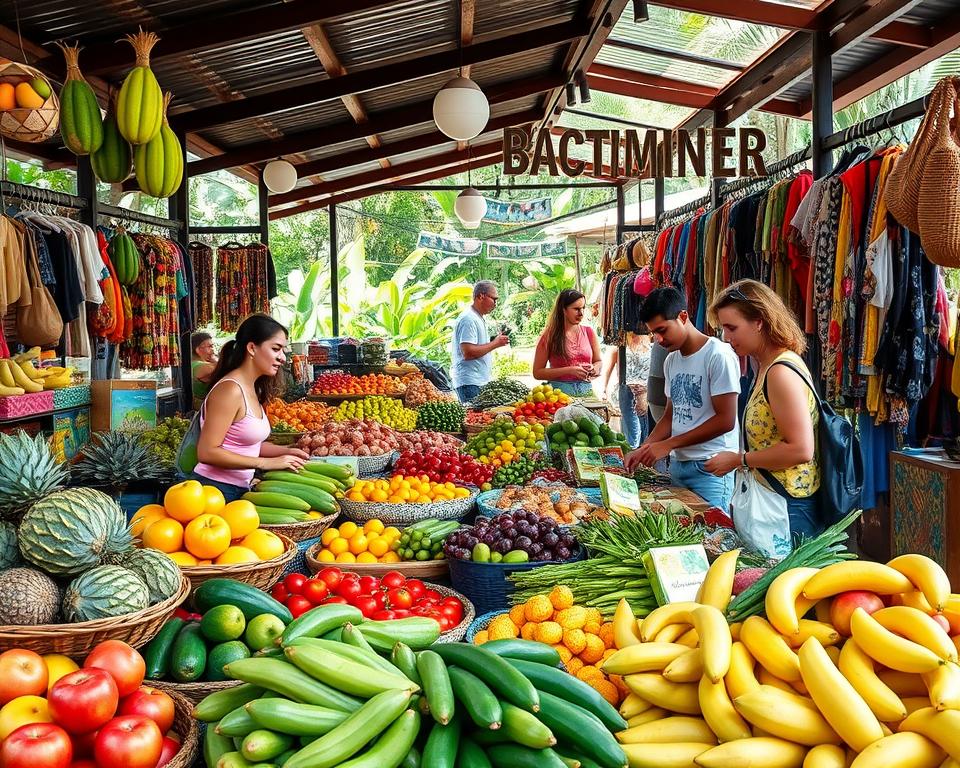Cost of Living: Are Things Cheaper in Costa Rica?
Have you ever wondered why Costa Rica is so appealing, despite its higher cost of living? Many dream of living affordably in Costa Rica, but it can be puzzling, compared to North America. A family of six spends over $5,300 a month, making us question: is it really cheaper here, or is it just an illusion?
Looking into the cost comparison between Costa Rica and the U.S. is crucial. We need to consider housing, healthcare, and everyday items. With grocery prices about 27.1% lower than in the U.S., it’s interesting to see if expats and tourists can find good value here. Let’s dive into the numbers and insights to understand the Costa Rican lifestyle better.
Key Takeaways
- The average monthly cost of living for a family in Costa Rica is around $5,300.
- Rental prices vary significantly, with luxury homes averaging $3,000 per month.
- Grocery prices in Costa Rica are about 27.1% lower than those in the U.S.
- Utilities are relatively affordable, averaging $45 per month compared to $160 in the U.S.
- While daily essentials may be cheaper, luxury items tend to be more expensive due to tariffs.
Understanding the Cost of Living in Costa Rica
Costa Rica offers a chance for a more affordable lifestyle. It’s important to understand the economic context to see how prices compare. Living expenses are about 30% lower than in the United States, making it attractive for both expats and locals.
Overview of Costa Rica’s Economic Context
Costa Rica has a diverse economy with strong sectors in tourism, agriculture, and technology. The value of the Costa Rican colón affects prices and living conditions. Despite recent global challenges, essential services like healthcare and housing are still cheaper than in North America.
Cost of Living Compared to North America and the Caribbean
A one-bedroom apartment in San José costs between $500 and $800 per month. This is much lower than in major U.S. cities, where rents often exceed $3,000. Everyday items like groceries are also about 29.9% cheaper in Costa Rica. Public transport is affordable, with a bus ride costing under $5.
Factors Influencing Living Expenses
Several factors affect living expenses in Costa Rica. These include local versus imported goods, consumer habits, and regional variations. Prices are higher in tourist areas but lower in countryside communities. The average monthly living cost ranges from $1,100 for a tight budget to $4,000 for a more comfortable lifestyle.
Cost Comparison: Costa Rica vs. the United States
Looking at the cost of living shows big differences between Costa Rica and the United States. We’ll look at housing, healthcare, and transportation costs. This will help you understand what to expect in each country.
Housing Expenses
In Costa Rica, a one-bedroom apartment in a city costs about $541 a month. In the U.S., the same apartment can cost around $1,531. A two-bedroom apartment in Costa Rica can cost between $800 and $2,500, depending on where it is and what it has.
This shows you can save a lot of money in Costa Rica compared to the U.S.
Healthcare Costs
Healthcare in Costa Rica is another big plus. The country has a universal healthcare system that’s free for legal residents. A hospital visit in the U.S. can cost about $631, but it’s much cheaper in Costa Rica.
Many medical services in Costa Rica are a lot cheaper than in the U.S. This makes it a great choice for expats and retirees.
Transportation and Utility Fees
Transportation costs in Costa Rica are different. A one-way bus ticket is about $0.85, much cheaper than the $2.27 in the U.S. A 5-mile taxi ride in Costa Rica costs around $13.70, while it’s about $15.70 in the U.S.
Utility costs in Costa Rica are also reasonable. You can expect to pay about $50 for electricity and $10 for water. In the U.S., utility costs can vary a lot, often being higher than in Costa Rica.

What’s Cheaper in Costa Rica?
Living in Costa Rica can help you save money every day. You can find affordable products and enjoy cost-effective living. This section will show you where you can save, like on everyday items, food, and fun activities.
Affordable Everyday Items and Services
In Costa Rica, many everyday things are cheaper. For example, a haircut with deep conditioning costs about $35, which is less than in the U.S. Beauty services like manicures start at $6, making it easy to pamper yourself.
Even basic grocery items like water, milk, and eggs are more affordable. This helps you save money on your daily expenses.
Local Food vs. Imported Goods
Local food prices in Costa Rica are a big plus. Eating out at local soda restaurants can cost just $6 for a meal. Cooking at home for six people costs only about $10 for groceries.
Local markets, or ferias, offer fresh produce at prices 27.1% lower than in the U.S. This makes it easier to eat healthy without spending a lot.
Entertainment and Leisure Activities
Costa Rica has many affordable entertainment options. The average cost to enter national parks is around $18. Visiting popular waterfalls costs about $15.
This means you can enjoy nature without spending a lot. Plus, there are many local dining spots and activities that are budget-friendly.
What’s More Expensive in Costa Rica?
Understanding what costs more in Costa Rica is key. Imported goods and luxury items are often pricier. This is because of high tariffs and taxes on imports, making them less affordable.
Transportation costs can also be a challenge. This is true, mainly for those who need a reliable vehicle.
Imported Goods and Luxury Items
Prices for imported goods in Costa Rica can jump up to 79% due to tariffs. This means luxury items, electronics, and foreign brands cost more. People looking for brand-name clothes or high-end electronics will see these price increases.
The difference between expensive and cheap items in Costa Rica is clear when shopping for imports. Knowing about Costa Rica shopping prices helps save money by choosing local goods.
Transportation Costs – Gas and Vehicles
Driving in Costa Rica comes with high transportation costs. Gas prices are high, and owning a vehicle is expensive. Import taxes make vehicles cost two to three times more than in the U.S.
Vehicle maintenance adds to the ongoing costs. This can make it hard to keep living expenses in check.
Are Things Cheaper in Costa Rica? A Detailed Analysis
Looking at the cost of daily items in Costa Rica shows big savings. Living here is about 30% cheaper than in the U.S. This means you can live more affordably. We’ll look at prices for groceries, healthcare, and housing, and share tips for saving money.
Daily Essentials and Their Prices
Costa Rica is great for saving money on everyday things. Here are some typical prices:
- Breakfast: $2 to $7
- Lunch: $4 to $10
- Dinner: $7 to $17
- Coffee: $2
- Fast Food or Street Food: $4
A one-bedroom apartment in San José costs $500 to $800. That’s half what it would in the U.S. Doctor visits are also cheaper, at $30 compared to $120 in the U.S. Using public transport is another way to save money.
Cost-Saving Tips for Expats and Tourists
There are many ways to save money in Costa Rica:
- Shop at local markets for fresh produce to get better prices than supermarkets.
- Use public transport instead of taxis or rental cars to cut travel costs.
- Try local eateries for meals like Casado or Gallo pinto to save money.
- Look for accommodations that include breakfast to save on meals. Quality can vary, so do your research.
- Always ask about meal inclusions when booking tours or activities, as it can affect the price.
These tips help you stay within budget while enjoying Costa Rica. Knowing the average prices helps you make smart choices and enjoy the country’s high quality of life.

Conclusion
In summary, Costa Rica might have higher prices for some imported goods and luxury items. Yet, the overall costa rica affordability makes it a great choice for many. Essentials like healthcare, housing, and local food are much cheaper, often 30-50% less than in the U.S. or Canada.
This shows that cost-effective living in costa rica is not just possible but also appealing. Making smart choices about daily spending can improve your life quality without breaking the bank. For example, eating out costs about $7, and utilities are under $70 a month.
These savings help people live well, enjoying things like movies and gym memberships. If you’re drawn to Costa Rica’s culture and beautiful landscapes, learning about comparison shopping in costa rica can help you find the best deals. So, whether you’re moving or just visiting, you can look forward to a wonderful experience without overspending in this lovely Central American country.
Source Links
- https://www.makecostaricahome.com/post/cost-of-living-in-costa-rica-is-costa-rica-expensive
- https://ticotimes.net/2023/10/19/is-costa-rica-expensive-an-expats-point-of-view
- https://www.gaprealestate.com/is-costa-rica-cheap-for-expats/
- https://crie.cr/cost-of-living-in-costa-rica-3/
- https://ticotimes.net/2024/06/30/debunking-the-myth-of-costa-ricas-exorbitant-cost-of-living
- https://www.westernunion.com/blog/en/us/the-cost-of-living-in-costa-rica-vs-the-united-states/
- https://www.coldwellbankersamara.com/article/costa-rica-the-cost-of-living-comparison-versus-the-united-states
- https://www.specialplacesofcostarica.com/blog/costa-rica-vs-us-cost-of-living-comparison/
- https://sallysees.com/costa-rica-on-a-budget/
- https://crie.cr/10-things-that-are-cheaper-in-costa-rica/
- https://www.nomadicmatt.com/travel-blogs/the-cost-of-traveling-costa-rica/
- https://crie.cr/grocery-shopping-in-costa-rica/
- https://crie.cr/is-the-cost-of-living-in-costa-rica-less-than-in-the-usa/
- https://www.budgetyourtrip.com/costa-rica
- https://www.gaprealestate.com/why-is-costa-rica-food-expensive/
- https://costaricachristies.com/blog/cost-of-living-in-costa-rica-why-you-should-move-there-now
- https://crie.cr/is-costa-rica-affordable/




